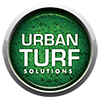Low Maintenance
One of the main benefits of artificial grass is that it requires very little maintenance compared to natural grass. With natural grass, you need to mow, water, and fertilise on a regular basis, which can be time-consuming and expensive. Artificial grass, on the other hand, requires very little maintenance. You don’t need to mow, water, or fertilise it, which means you’ll save time and money in the long run. This is particularly beneficial for those with busy lifestyles who don’t have the time or energy to maintain a natural lawn.
In addition, artificial grass is resistant to weeds, pests, and diseases, so you don’t need to worry about using harmful chemicals to keep your lawn looking healthy. This makes it a safer and more eco-friendly option for your garden.

Durability
Artificial grass is also a more durable option than natural grass. It is designed to withstand heavy foot traffic and extreme weather conditions, so it will stay green and lush all year round. This is particularly beneficial for those who have children or pets, as it will be able to withstand the wear and tear that comes with frequent use.
Another benefit of artificial grass is that it is resistant to fading from the sun’s UV rays, so it will maintain its vibrant green colour for years to come. This means you won’t have to worry about your lawn looking patchy or discoloured, as can happen with natural grass.
Versatility
Artificial grass is a versatile option for your garden, as it can be used in a variety of different ways. You can use it to create a play area for children, an outdoor dining area, or a space for entertaining guests. It can also be used to create a putting green for golf enthusiasts, or a surface for other sports and activities.
Another benefit of artificial grass is that it can be used in areas where natural grass can’t grow, such as on steep slopes or in areas with poor soil quality. This makes it a great option for those with challenging garden spaces.
Artificial grass can also be used to create a low-maintenance and visually appealing alternative to traditional flower beds. It can be used to create a border around your garden or to create a low-maintenance feature that doesn’t require watering or pruning.
Artificial grass is a versatile and durable option for your garden that requires very little maintenance. It is a safe and eco-friendly alternative to natural grass, and can be used in a variety of different ways to create a visually appealing and functional outdoor space.
The Environmental Benefits of Artificial Grass
One of the key benefits of artificial grass is its environmental impact. Natural grass lawns require a lot of water to keep them green and healthy, especially in areas with low rainfall. In contrast, artificial grass requires no watering, which makes it a more environmentally friendly option. Additionally, the use of chemical fertilisers and pesticides on natural grass lawns can have a negative impact on the environment, whereas with artificial grass, you don’t need to use any chemicals.
Artificial grass also helps to conserve water resources, as you won’t need to use any water to maintain your lawn. This is particularly important in areas where water is scarce or where there are water restrictions in place. By using artificial grass, you can help to reduce the strain on local water resources and ensure that you are doing your part to protect the environment.
Artificial grass is made using recycled materials, which makes it a more sustainable option than natural grass. Many artificial grass products are made using recycled plastic bottles, which helps to reduce waste and keep plastic out of landfills.
Artificial Grass Installation and Maintenance Tips
Artificial grass is an investment in your home, and as with any investment, it is important to take care of it properly. Here are some tips for installing and maintaining your artificial grass:
Choose the right type of artificial grass for your needs. There are many different types of artificial grass available, so it’s important to choose the one that best suits your needs. Consider the amount of traffic your lawn will receive, the level of maintenance you are willing to undertake, and your budget.
Prepare the ground properly. To ensure that your artificial grass looks its best and lasts as long as possible, you need to prepare the ground properly. This involves removing any existing grass, weeds or debris, and leveling the ground.
Install a weed barrier. To prevent weeds from growing through your artificial grass, it’s important to install a weed barrier before laying the grass. This will also help to prevent pests from burrowing under the grass.
Use the right type of infill. Infill is the material that is used to weigh down the artificial grass and keep it in place. There are many different types of infill available, so it’s important to choose the one that is best suited to your needs.
Keep your artificial grass clean. To keep your artificial grass looking its best, it’s important to clean it regularly. This involves removing any debris, leaves, and other material that has accumulated on the surface of the grass. You can use a leaf blower or a stiff brush to do this. Additionally, you may want to rinse the grass with a hose to remove any dirt or dust.
By following these tips, you can ensure that your artificial grass looks its best and lasts as long as possible. With the right installation and maintenance, you can enjoy the benefits of a lush, green lawn without the hassle of natural grass.
